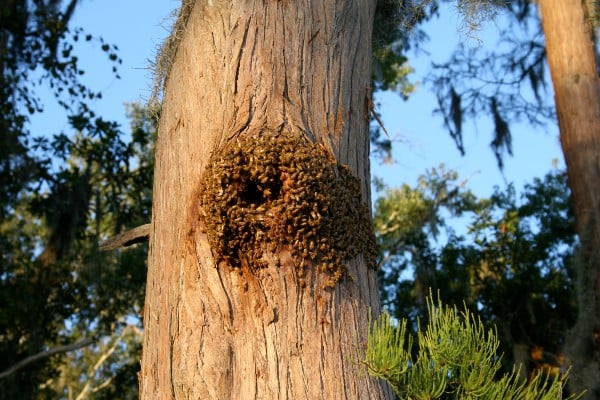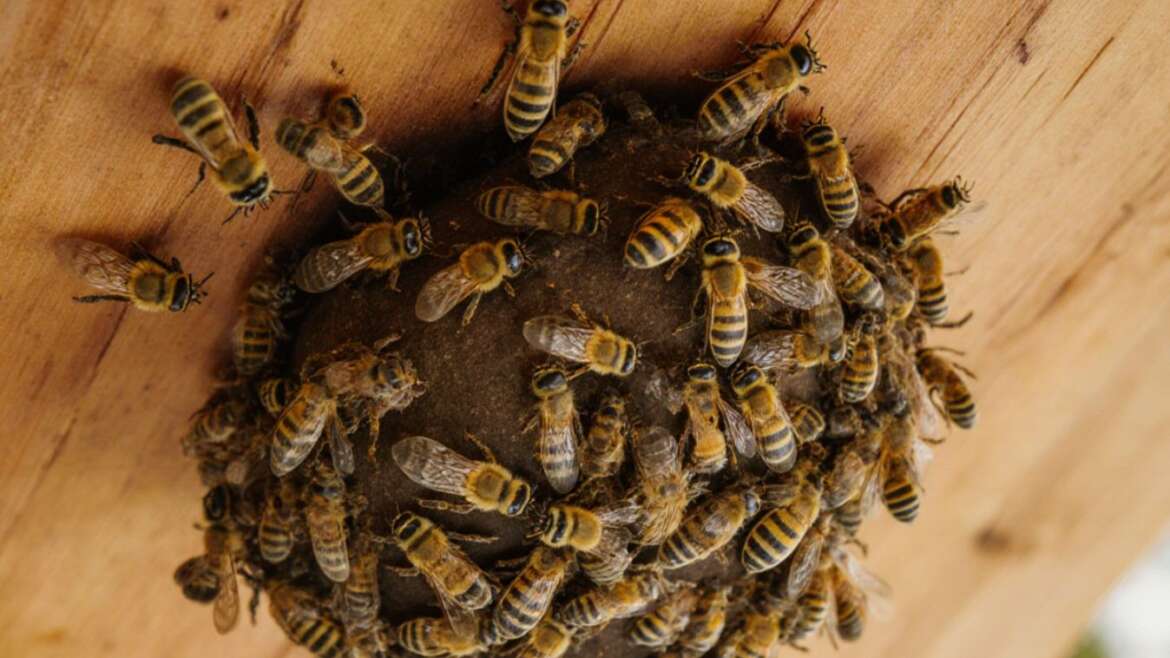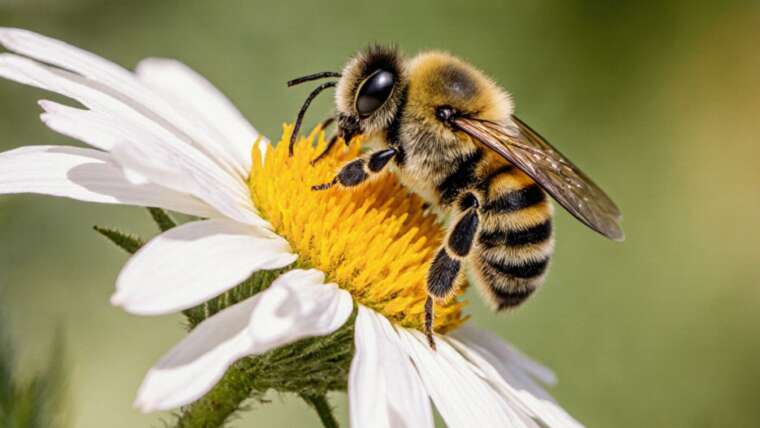Finding a bee nest near your home can be concerning, especially when there are many different types of stinging insects to consider. However, you can often determine whether it’s a honey bee nest from a safe distance! By observing their behavior, the type of nest they’ve built, and its location, you can gain valuable insights. Knowing these subtle clues can help you identify honey bees and decide on the best approach to manage them effectively.
What do honey bee nests look like?
Honey bees construct their nests from wax, which differentiates them from the papery, gray structures associated with wasps and hornets. Inside a honey bee nest, you’ll find perfectly hexagonal cells tightly packed together. The exterior of the nest has a bumpy yet generally smooth, waxy texture. Expect sizes to vary significantly, with nests ranging anywhere from the size of a football to several feet long, often hidden in tree hollows or wall cavities. If you wish to identify a honey bee hive, look for fuzzy, yellowish-brown bees with black stripes calmly flying in and out of a small entrance, appearing busy rather than aggressive.
Tip: Observe the bees during peak activity times, usually in the late afternoon, to get a clearer picture of their behavior and nesting activity.

Where do honey bees nest?
Honey bee nests are typically found in protected, hollow spaces like trees, rock crevices, and even structural elements of your home, such as walls, attics, chimneys, or sheds. Although many images depict nests dangling from branches, it’s worth noting that honey bees prefer to keep their homes well-protected. While it’s rare to have multiple nests in one home due to the limited availability of suitable, large, hollow spaces, it’s still possible if there are distinct, separate areas available.
Tip: If you suspect honey bees in your area, consider setting up a bee observation station at a safe distance, allowing you to monitor the situation without disturbing them.
How do honey bees make their hives?
Honey bee nests can endure anywhere from two to five years, depending on various factors like weather and environmental conditions. These industrious insects secrete wax from specialized glands located in their abdomens to construct their homes. The hive primarily consists of honeycomb, a series of interlocking hexagonal cells formed using this wax. Worker bees consume honey, which is then converted into wax through a complex process involving chewing and mixing it with saliva, making it pliable for use.
Each cell is formed from countless tiny pieces of wax, repeated tens of thousands of times as the hive expands. A typical honey bee nest comprises about 100,000 individual cells, with the top cells serving as honey storage, the middle cells storing pollen, and the lower cells designated as “brood cells,” where young bees are nurtured.
Tip: If you’re interested in bee biology, consider researching hexagonal shapes in nature, such as snowflakes and flower petals, to appreciate the mathematical efficiency of honeycomb construction.
Why are they called honey bees?
As their name implies, honey is fundamentally important to honey bees. Interestingly, they don’t solely depend on honey to fuel their hive-building endeavors; they also require it to survive the colder winter months when foraging for nectar and pollen isn’t an option. To endure winter, they need to store a significant amount of honey, ranging from 40 to 60 pounds.
During the winter months, honey bees cluster around their queen to provide warmth and assist her reproductive capabilities, which also demands considerable energy expenditure. Hence, honey serves as both their food source and a key driver of their communal activities.
Tip: Consider supporting local honey production by purchasing honey from local beekeepers; this helps both the bees and your local economy while giving you a taste of your region’s unique floral sources.
Should you get rid of a honey bee hive if it’s near your home?
Bees are not inherently pests; in fact, without their vital pollination efforts, many of the fruits and vegetables we enjoy would not exist. Generally considered beneficial insects, bees can become a nuisance if they nest in or around your home, particularly if anyone in the vicinity has allergies. Not only can these bees pose a threat, but they can also cause structural damage over time—honeycomb can weaken walls, and bees may chew through wood as they create their nests.
If you find that bees have established a nest near your home, it’s best to consult with a professional beekeeper for safe relocation options. These specialists possess protective gear and knowledge of best practices for removing honey bee nests safely. However, if the honey bees are causing structural damage or pose imminent danger, don’t hesitate to contact pest management professionals like Terminix, who can provide effective solutions tailored to your situation.
Tip: Before removal, check local laws and regulations regarding bee relocation, as some areas have specific protections in place for honey bees due to their ecological importance.




